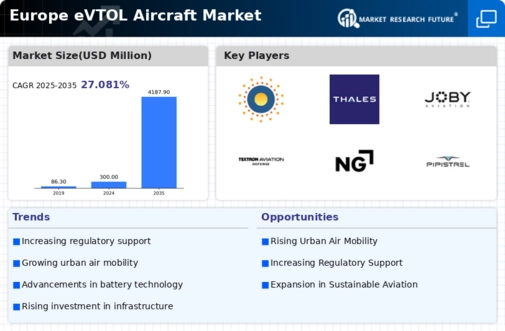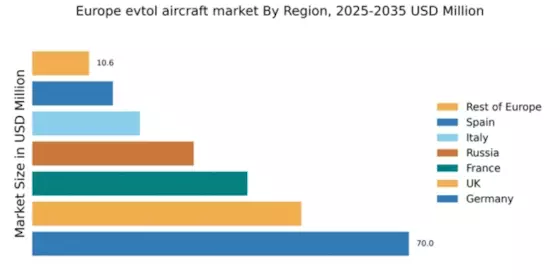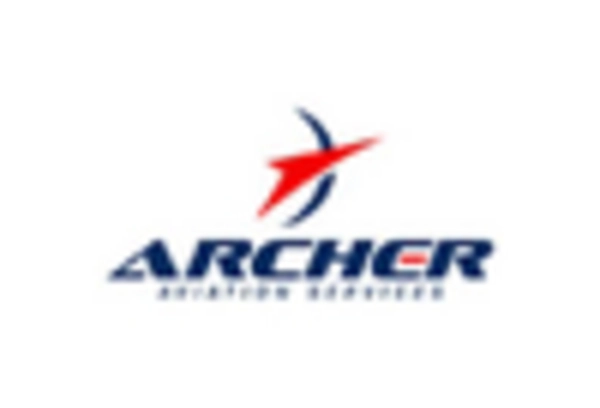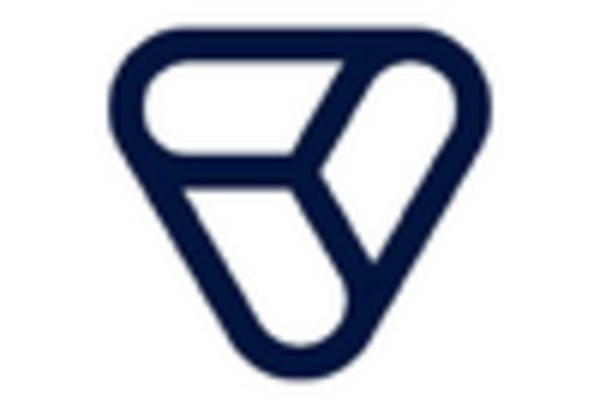The evtol aircraft market is currently characterized by a dynamic competitive landscape, driven by technological advancements, regulatory support, and increasing urban air mobility demands. Key players such as Joby Aviation (US), Volocopter (DE), and Lilium (DE) are strategically positioning themselves through innovation and partnerships. Joby Aviation (US) focuses on developing a fully electric aircraft designed for urban air mobility, while Volocopter (DE) emphasizes its operational readiness through extensive testing and regulatory engagement. Lilium (DE) is pursuing a unique approach with its jet-like design, aiming to cater to longer distances. Collectively, these strategies foster a competitive environment that prioritizes technological differentiation and regulatory compliance.
In terms of business tactics, companies are increasingly localizing manufacturing to enhance supply chain resilience and reduce operational costs. The market appears moderately fragmented, with several players vying for dominance. However, the influence of major companies is substantial, as they leverage their resources to optimize supply chains and establish strategic partnerships, thereby shaping the overall market structure.
In October 2025, Joby Aviation (US) announced a partnership with a major European airline to develop a network of air taxi services across key urban centers. This collaboration is strategically significant as it not only enhances Joby’s operational footprint in Europe but also aligns with the airline's sustainability goals, potentially increasing passenger adoption of air mobility solutions.
In September 2025, Volocopter (DE) successfully completed a series of test flights in a major European city, marking a critical milestone towards commercial operations. This achievement underscores Volocopter's commitment to regulatory compliance and operational safety, which are essential for gaining public trust and regulatory approval in urban environments.
In August 2025, Lilium (DE) secured a substantial investment from a consortium of European investors, aimed at accelerating the development of its electric vertical takeoff and landing (eVTOL) aircraft. This funding is pivotal as it not only bolsters Lilium's financial position but also signals confidence from investors in the viability of eVTOL technology, potentially enhancing its competitive edge in the market.
As of November 2025, current trends in the evtol aircraft market include a pronounced focus on digitalization, sustainability, and the integration of artificial intelligence (AI) into operational frameworks. Strategic alliances are increasingly shaping the competitive landscape, as companies recognize the value of collaboration in navigating regulatory challenges and technological advancements. Looking ahead, competitive differentiation is likely to evolve, shifting from price-based competition to a focus on innovation, technological prowess, and supply chain reliability, as companies strive to meet the growing demands of urban air mobility.


















Leave a Comment